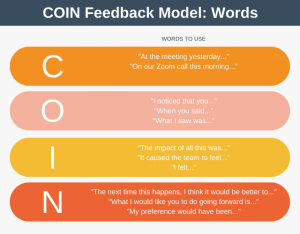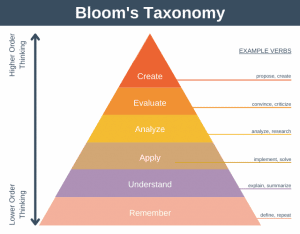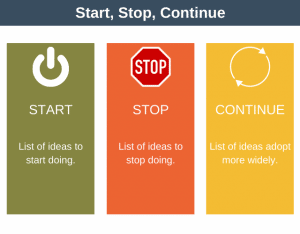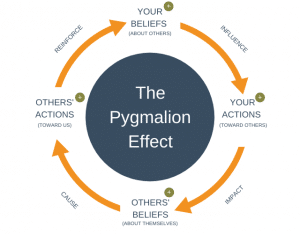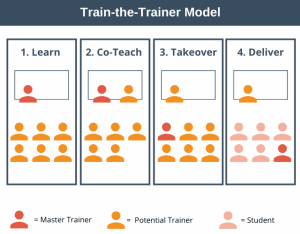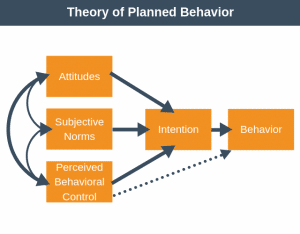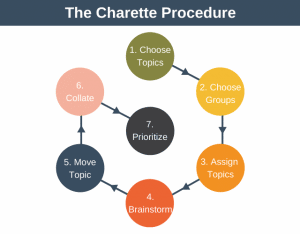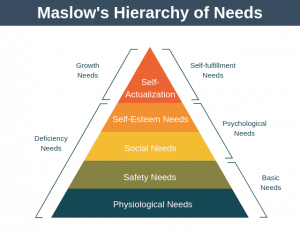Kolb’s Learning Cycle, also known as the Experiential Learning Cycle, is a four-stage process that explains how you learn through experience.
The model shows that for effective learning to occur, you must pass through four stages. The model uses the word “experiential” to highlight the fact that we learn through our experiences.
David Kolb published his experiential learning cycle in 1984.
Rather than delivering a lecture-style form of training, Kolb’s learning cycle involves active participation that guides learners through the experiential learning cycle.
Using the Model in the Workplace
How can we make use of Kolb’s learning cycle in the workplace to improve our skills or those of our team?
Well, the best performing organizations invest in the training and development of their employees. Some of this training will happen through courses and accreditations, but much of it will occur between team members or from manager to team.
The usual way you train people might be to transmit information to them via a presentation. The experiential learning cycle provides an alternative to this by enabling you to actively engage those you’re teaching.
Thus, there are two ways you can use Kolb’s learning cycle to improve the performance of your team:
- When training your team, use at least one activity that supports each learning phase.
- Train your team on how to use experiential learning theory so they can more effectively train each other.
Kolb’s Learning Cycle
Experiential learning is a four-stage, continuous process that describes how people learn by doing. By understanding this cycle, you can create better training for both your team members and yourself.
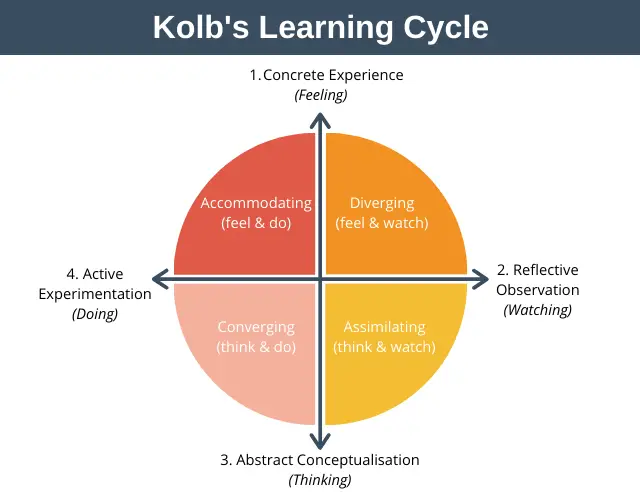
The model essentially says that to learn most effectively, you must follow four steps. Note that the model is continuous, meaning you can pass through the four steps many times. This is another way of saying that you learn from your experiences over time.
While the steps of Kolb’s learning cycle must be followed in sequence, you don’t have to start at step one; you can enter the model at any stage.
As well as providing the four-step learning process, the model also provides four learning styles outlining how different types of people prefer to learn new things.
Let’s jump in and look at each of the four steps, and then we’ll look at the four learning styles.
1. Concrete Experience
Concrete experience means that it’s not enough to watch someone else do it or read about it. You must do it yourself for learning to occur.
This can happen, for example, when you try a new task or perform an existing task in a new way. This step aims to create a concrete experience through actually doing.
2. Reflective Observation
The second stage involves reflective observation, which means taking a step back from the act of doing to look at the bigger picture and review what you have experienced.
Tools to help you achieve reflective observation include: giving your observations and being asking questions, such as how could what you’ve just done be applied to a different circumstance.
3. Abstract Conceptualisation
In this stage, you make sense of what you have just experienced. To do this, you don’t just look at what you’ve just done; you also pull in other information, theories, and ideas you’re already familiar with. Another way to think about this stage is that you’re fitting what you’ve just learned into everything you already know so that it all makes sense together.
Tools to help achieve abstract conceptualization and solidify your ideas include: presenting your ideas, creating a model, and writing a paper.
4. Active Experimentation
This final stage happens when you consider how you will put what you have learned into practice.
If you don’t plan to use what you’ve just learned, then it’s likely that you’ll forget it quickly.
Note that the moment we stop planning and start doing, we reenter step one of Kolb’s learning cycle again.
Learning Styles
Kolb’s four learning styles are explained based on two dimensions. The first dimension is whether you prefer active experimentation (doing) or reflective observation (watching). The second dimension is whether you prefer abstract conceptualization (thinking) or concrete experience (feeling).
You will sometimes see the east-west called the Processing Continuum (referring to how we approach a task). The north-south axis called the Perception Continuum (referring to our emotional response to the task, or how we think and feel about it).
Let’s briefly examine each of the learning styles identified within Kolb’s learning cycle.
1. Diverging (Feeling & Watching)
People who prefer this learning style can see things from different perspectives. They prefer to watch rather than do, and prefer to collect information and then use their imagination to solve problems.
People with this learning style prefer to work in groups, take feedback well, and are interested in different cultures and people.
2. Assimilating (Watching & Thinking)
People who prefer this learning style enjoy ideas and theories but are less interested in the people side of things. They are logical problem solvers. They will be more interested in the logic of a theory than its practical application.
People with this learning style often work as technical experts, for example, software engineers and scientists. They prefer to learn by reading, taking lectures, and having the time to think things through.
3. Converging (Doing & Thinking)
People who prefer this learning style enjoy ideas and theories and enjoy using their knowledge to solve practical problems. While they aren’t that concerned with interpersonal issues, they enjoy practical problem solving (doing).
People who prefer this learning style also often work as technical experts. However, unlike the assimilating style, they like to apply their knowledge in a hands-on way to solve practical problems.
4. Accommodating (Doing & Feeling)
People who prefer this learning style are hands-on, learning through doing and using their intuition to figure things out.
They prefer to use their gut instincts rather than performing a detailed logical analysis. This doesn’t mean that they don’t use logical information, just that they don’t perform the logical analysis themselves, preferring to rely on the findings of others.
Kolb’s Learning Cycle Example
Imagine you are a team leader, and that you want each of your team members to be able to coach others effectively. Here is how you might approach each of the four stages of the learning cycle. Note that you don’t have to start at the first stage presented here; you can begin at any stage you like.
- Concrete Experience: You ask your team to jump in and try to coach someone.
- Reflective Observation: You ask your team to discuss amongst themselves and share what they each learned through their coaching experience.
- Abstract Conceptualisation: You provide each team member with a book to read, explaining the theory and best-practice of coaching.
- Active Experimentation: You hire an expert coach to guide each of your team members as they think about planning to coach others.
Given you have several people on your team, it’s likely they’ll have a different preferred learning style. Here’s how you could first approach learning to become a coach depending on preferred learning style according to Kolb’s learning cycle:
- Diverging: Begin by understanding other people’s take on how to coach through a group session.
- Assimilating: Begin by reading a book explaining best-practice regarding coaching, such as the GROW Model.
- Converging: Also, begin by reading the best-practice book, but additionally, plan how to put the theory into practice.
- Accommodating: Begin by jumping in and trying to coach someone, leaning as they go.
Advantages & Disadvantages
Let’s take a look at some of the pros and cons of Kolb’s learning cycle.
Advantages
The benefits of Kolb’s learning cycle include:
- Each stage of the model is associated with a different preferred learning style. This ensures that all preferred learning styles are used as you step through the model.
- The model provides a blend of traditional teaching plus hands-on learning.
- The model forces the teacher to use more tools than simply broadcasting their knowledge to the student.
Disadvantages
The disadvantages of Kolb’s learning cycle include:
- The recognition that learners have different learning styles is useful, but it can be difficult for a trainer to accommodate a range of learning techniques in a group situation.
- It is not always obvious how to apply the model in the real world.
- Because the teacher is no longer broadcasting their knowledge, they need to know their students already to tailor the training to them.
- The continuous cycle approach to learning may not be ideal if you need to take an exam at some point.
Summary
Kolb’s learning cycle consists of four stages of action that have to take place for effective learning to have taken place; feeling, observing, thinking, and doing. The model also describes different learning styles, acknowledging that as unique individuals, people prefer to learn in different ways.
